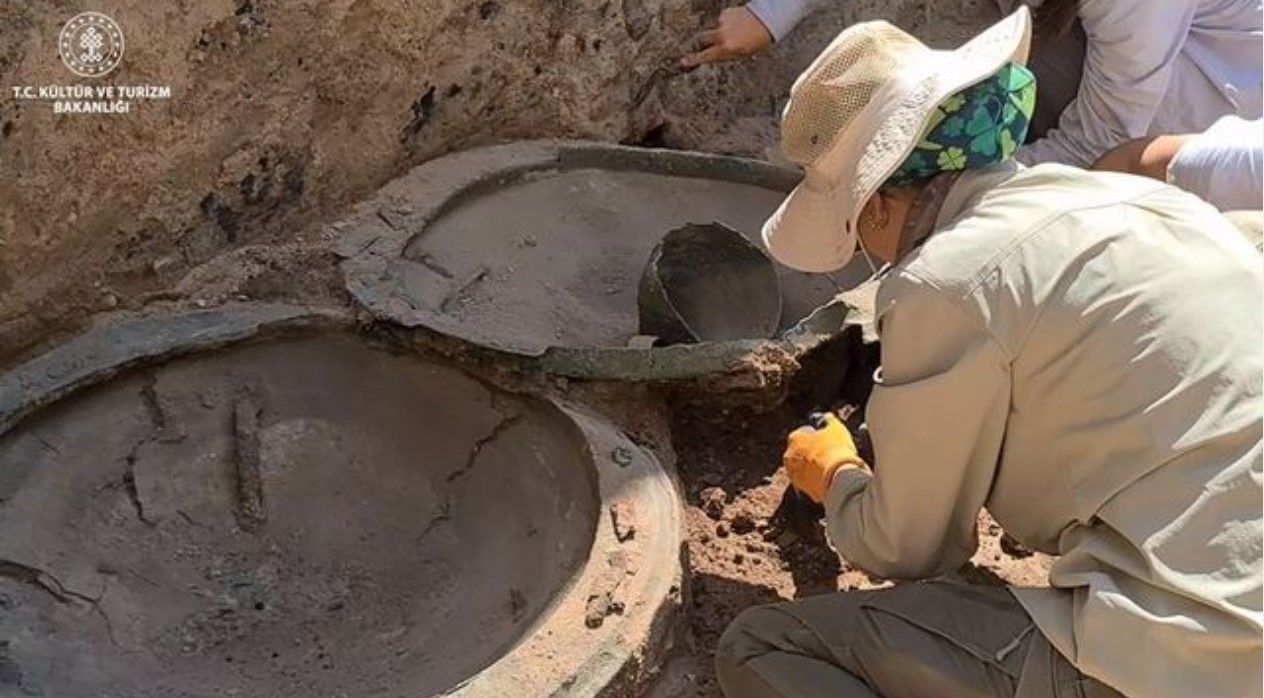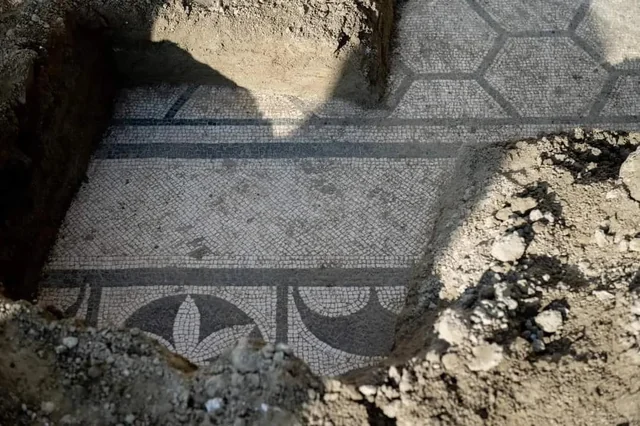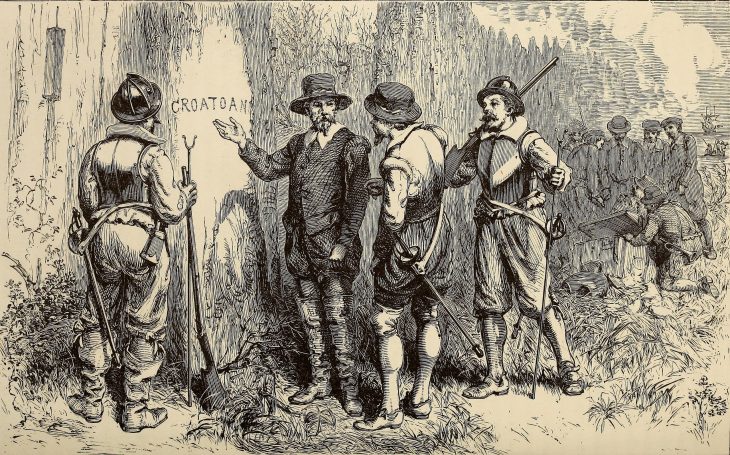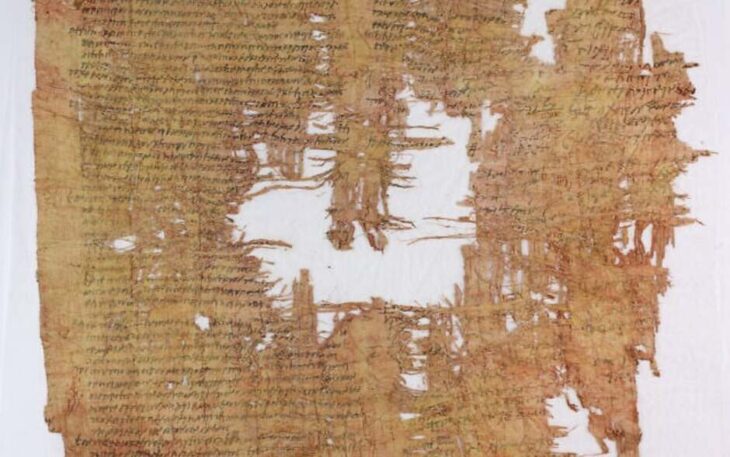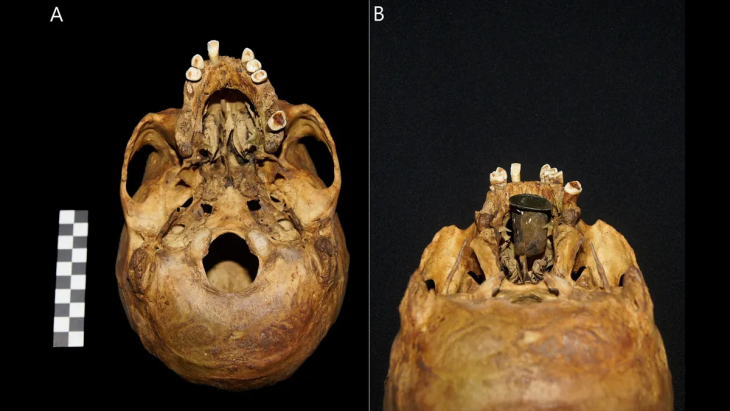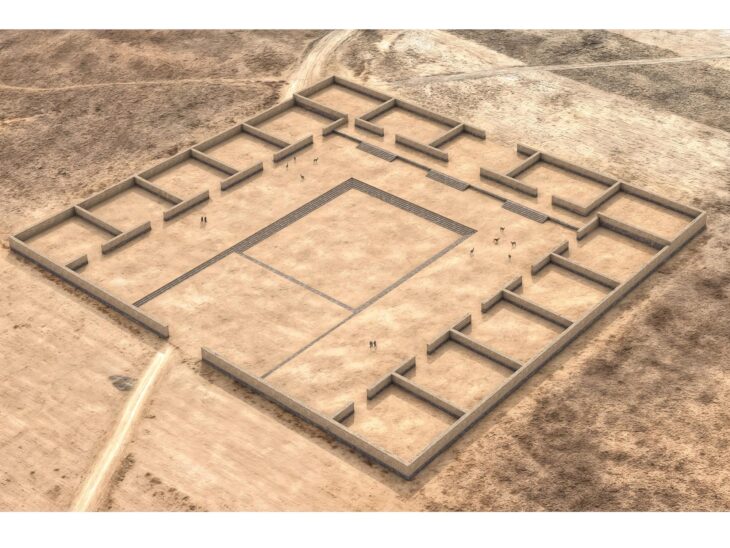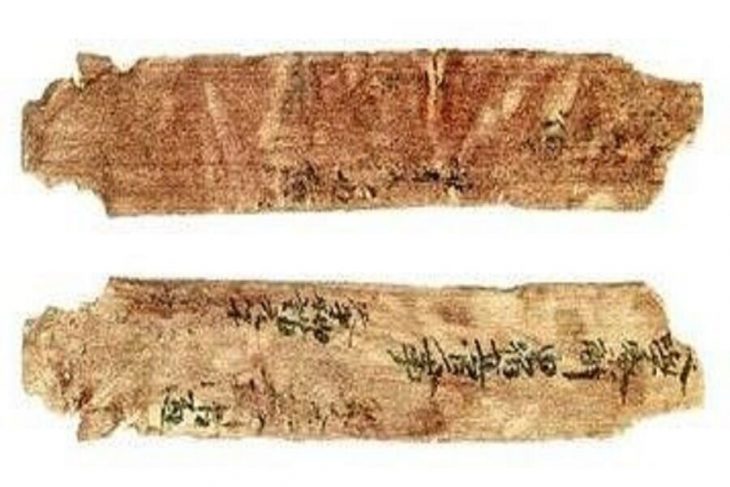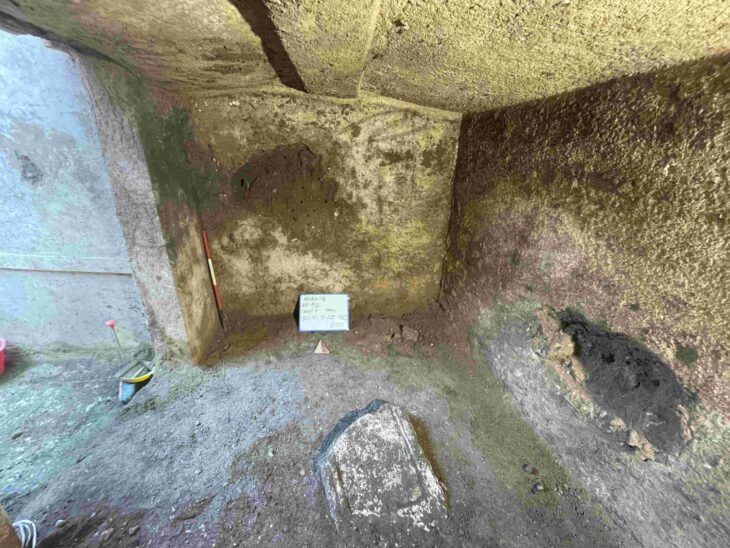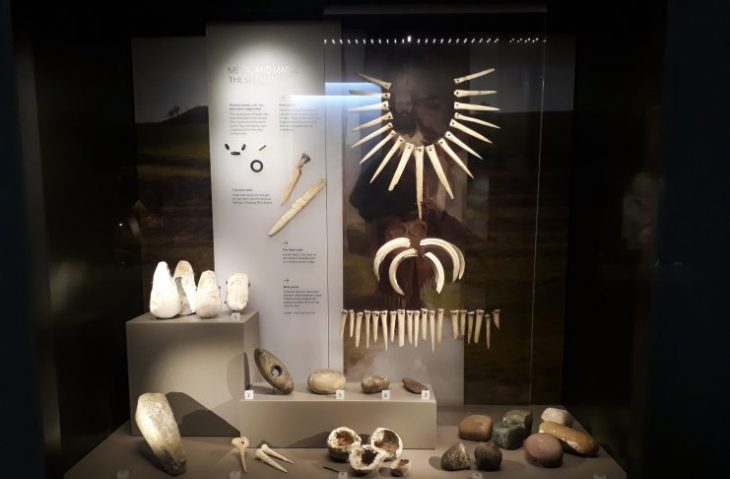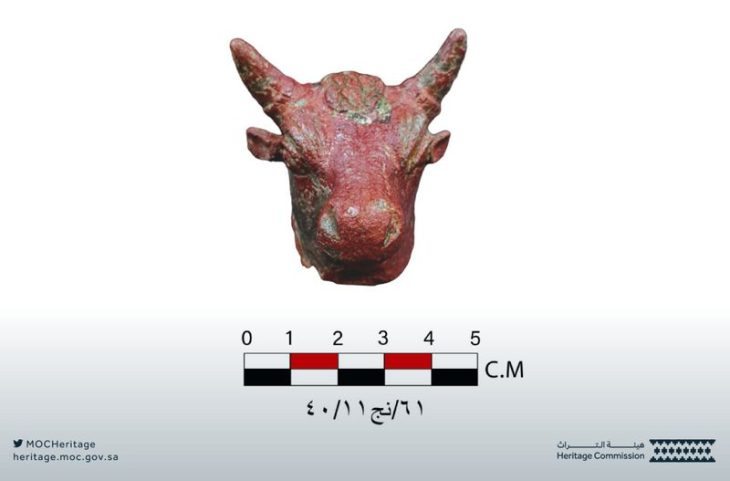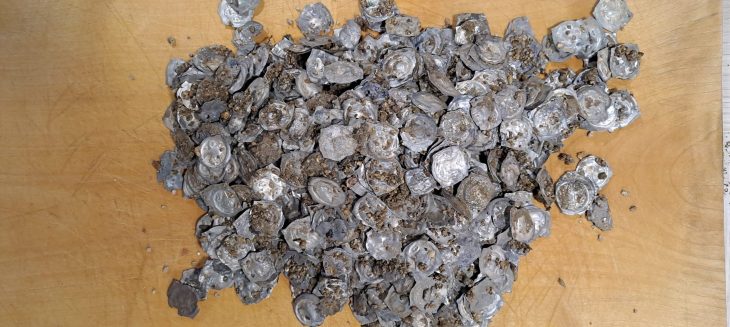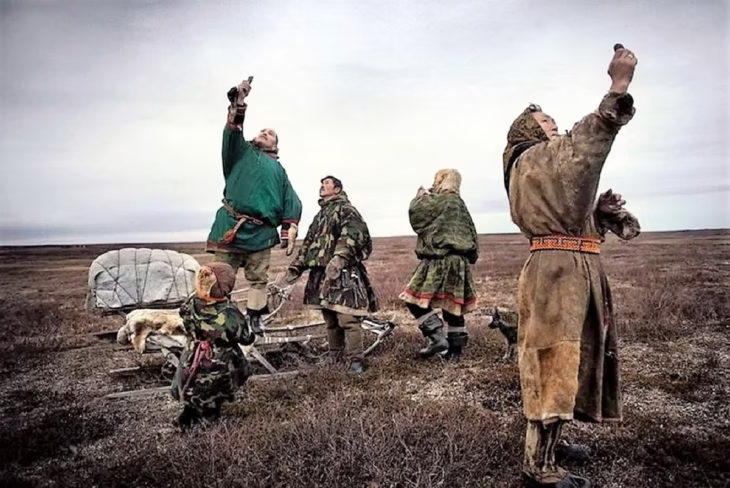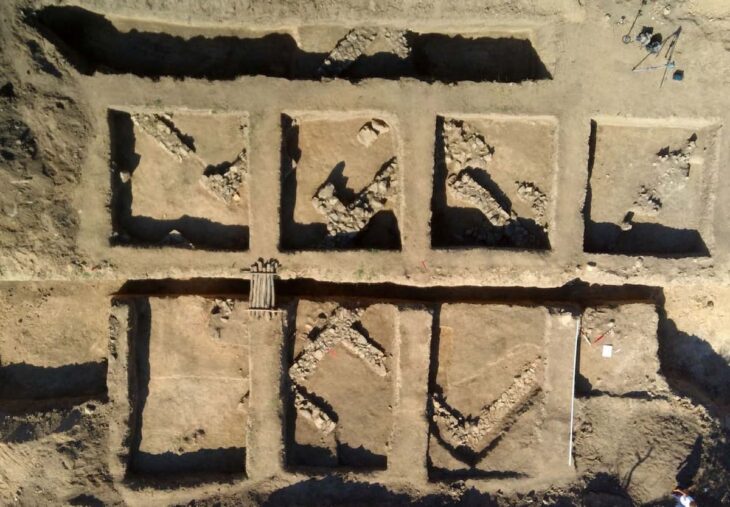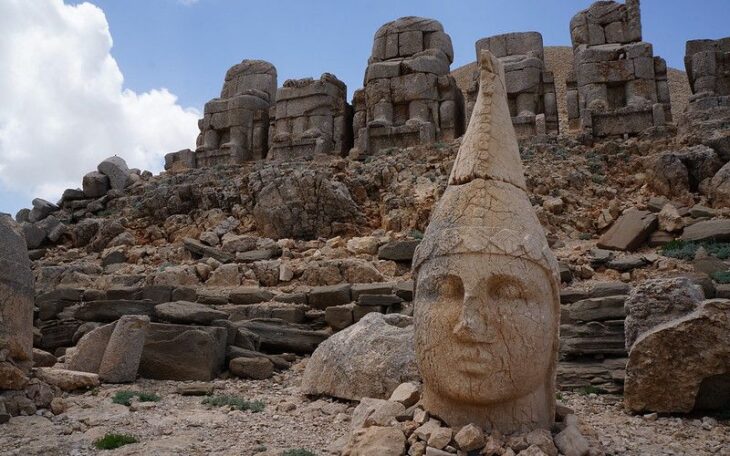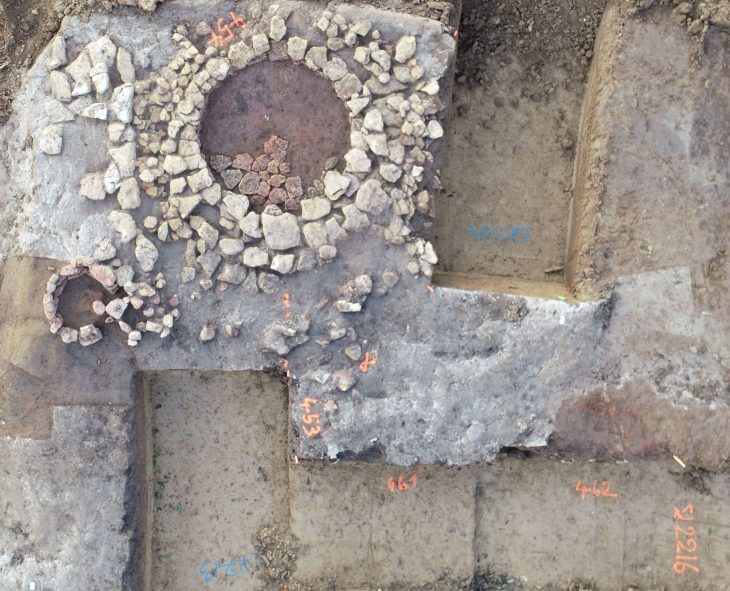Three bronze shields and a bronze helmet dedicated to Haldi, the chief god of the Urartians, were discovered during excavations at the Ayanis Castle in Van province in eastern Türkiye.
The discovery was announced on the social media account of Mehmet Nuri Ersoy, Minister of Culture and Tourism.
Ayanis Castle was built on a rocky hill close to Ağartı village whose old name was “Ayanis” and situated on the east bank of Lake Van, 38 km east of the capital Tuşpa.
Ayanis Castle, where the temple of Haldi, one of the most intact Urartian temples, is located, was built by the last great King of Urartu, Rusa II, in the mid-7th century BC. Written evidence shows that the fortress was destroyed by a major earthquake and associated fires 20 to 25 years after its construction.
In the Ayanis Castle, known to be the last castle of the Urartu Kingdom, the archeological excavations are ongoing since 1989. The excavations were conducted under the presidency of Prof. Dr. Altan Çilingiroğlu within the scope of Ege University “Van Project” until 2012. The studies are rendered by Prof. Dr. Mehmet Işıklı, associate in the Archeology Department, Literature Faculty, Atatürk University since 2013.
📣 Our WhatsApp channel is now LIVE! Stay up-to-date with the latest news and updates, just click here to follow us on WhatsApp and never miss a thing!!
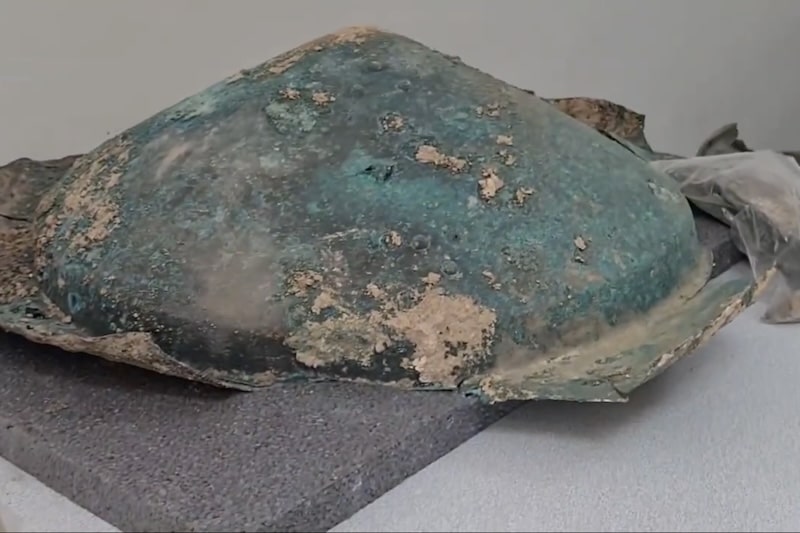
For the last few seasons, the excavation team has been trying to uncover the structures associated with the Haldi Temple in the citadel. In the 2024 excavation season, three bronze shields and a bronze helmet dedicated to Haldi, the chief god of the Urartians, were unearthed. The artifacts found during the excavations in the monumental temple complex dedicated to the god Haldi reflect the richness of Urartian metalwork.
Prof. Dr. Mehmet Işıklı said in his statement, ‘In this year’s excavations, we unearthed 3 bronze shields and 1 helmet, which were found in very good condition. The shields and helmet are dedicated to Haldi, the chief god and god of war. As you know, Ayanis Castle suffered a great earthquake. Because of this earthquake, there is a big collapse caused by the mudbrick walls. many artifacts are deformed because of this. but the artefacts found are in very good condition because they were found on the floor of the room at a depth of about 6-7 meters. Of course, we have some minor fractures and we will complete these with restoration and conservation.’
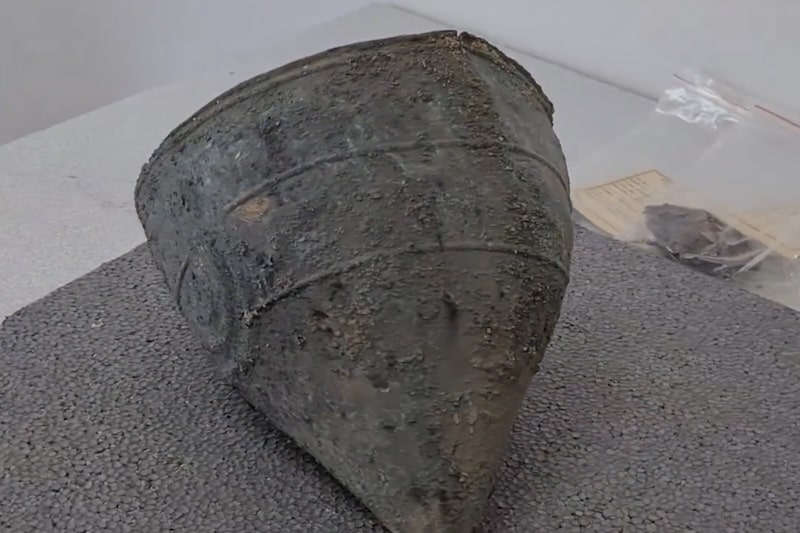
“There is also a bronze helmet among the artifacts found. We guess that it is a decorated and ceremonial helmet. Because we can see some decorations now, of course, it will be possible to see these ornaments and decorations more clearly after a comprehensive restoration and conservation,” he added.
Professor Işıklı stated that there is strong evidence that the site was used by a royal and religious elite group. After 36 years of excavations, the Ayanis fortress has yielded a rich collection of bronze artifacts, especially bronze weapons. To date, more than 30 bronze shields have been unearthed during the excavations of the castle.
Cover Image: Republic of Türkiye Ministry of Culture and Tourism

